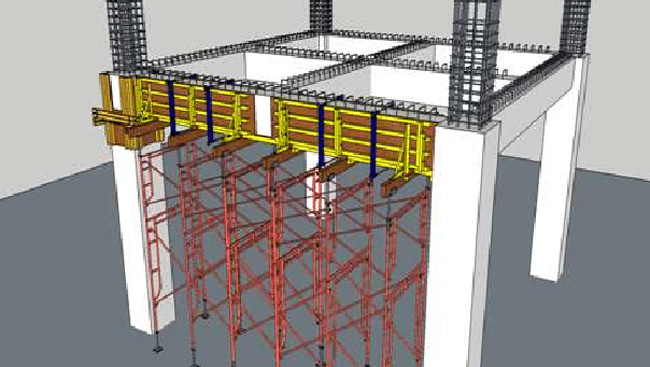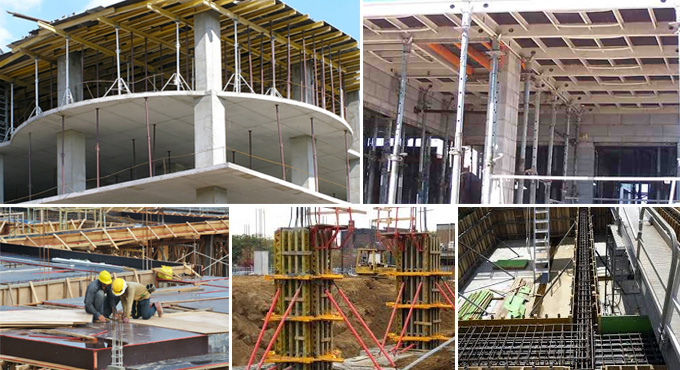NEWS | SOFTWARE | SHEET
Types of Beam and Slab Formwork
The formwork, also known as shuttering, has been used as the mould for the construction structure. In formwork, concrete has been poured to harden subsequently. The formwork helps to provide support to the concrete structure until it hardens and becomes self-supporting.

The formwork or shuttering helps to ensure the accuracy, safety and quality of the concrete construction procedure. A variety of materials have been used to construct the formwork, including steel, timber, and prefabricated panels. The formwork or shuttering has been designed to resist the concrete pressure while it is being poured and cured.
Different types of shuttering that are used on the construction site
Appropriate formwork or shuttering is required to ensure the strength of the concrete structure. The types of shuttering depend upon the materials that have been used in that specific shuttering.
Steel Shuttering
The steel shuttering has been used in the large construction projects. The steel formwork comprises panels of thin steel plates which has been connected by small steel angles at the edges. The steel shuttering is relatively strong compared to the other types of formwork.
Timber Shuttering
This type of formwork is relatively lightweight as well as easy to install compared to the other type of formwork. These types of shuttering have been available in various shapes and sizes, which are easy to build at the construction site. The use of timber shuttering is common in small-scale construction projects.
Plastic Shuttering
These types of formwork are labour-friendly as well as easy to install. The plastic shuttering can be reused more than 100 times and it is appropriate for the plain construction structure. These types of formwork help to provide a smooth and glossy finish to the construction structure which reduces the requirement for plastering.
Tunnel Shuttering
The tunnel shuttering helps to facilitate the casting of walls and slabs. For mass housing projects including hostels, hotels, commercial developments and others, these types of formwork are appropriate.
Fabric Shuttering
In this type of shuttering, geotextile fabrics have been employed as the formwork instead of steel or conventional wood formwork. These types of shuttering help to provide support for he hydraulic pressure of wet concrete, which are lightweight and highly flexible.
Plywood Shuttering
In these types of shuttering, the sheets of water-resistant plywood have been attached to the wooden formwork which helps to get a smooth concrete finish. These types of formwork are highly durable and also reused several times.
Equipment used for designing formwork
Various equipment has been used for designing and constructing formwork, which includes the following:
Braces
This component helps to keep the formwork upright.
Ties
This material has been used to connect the opposite side of the formwork as well as helps to resist the pressure of the fresh concrete.
Studs
This material helps to support sheathing panels, thus helping to keep the formwork in its right position.
Sheathing
This part has been used for keeping the concrete in its accurate shape and position until the concrete sets and hardens.
Wales
These are the propping members which has been placed against the sheathing, as a result, they help to resist the sheathing pressure.
Battens
These are the vertical members in the formwork. This part helps to keep the cleats and wales in their position.
Footing
This is the bottommost member of the formwork, which provides support for the entire formwork.
Importance of using formwork in construction
There are numerous benefits of using formwork or shuttering in the construction site, which are as follows:
- The main advantage of the formwork is that it can not be replaced with any modern technology.
- The construction of the concrete structure has been done more quickly and in an affordable way by using the formwork.
- An appropriate access and working platform has been offered by the formwork, which helps to enhance the safety of the workers.
- The floor-to-floor construction cycle time has been reduced by using formwork, which helps to maintain the project schedule, as well as, reducing the overall cost of the construction project.
- Formwork also allows the construction manager to perform on-time shuttering and de-shuttering of formwork resources. This helps to improve the usage of the resources and increases the effectiveness of the construction project.
- The formwork also helps to produce a smooth finished surface of the concrete.
- The formwork also helps to produce safe and practical structures by offering solutions against all overlay loads.


